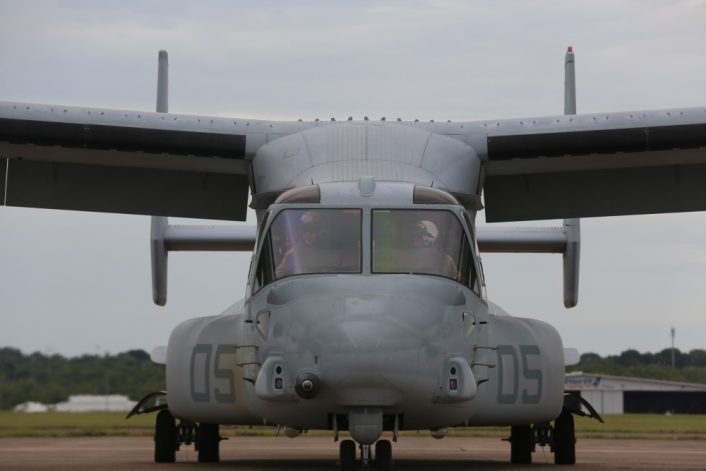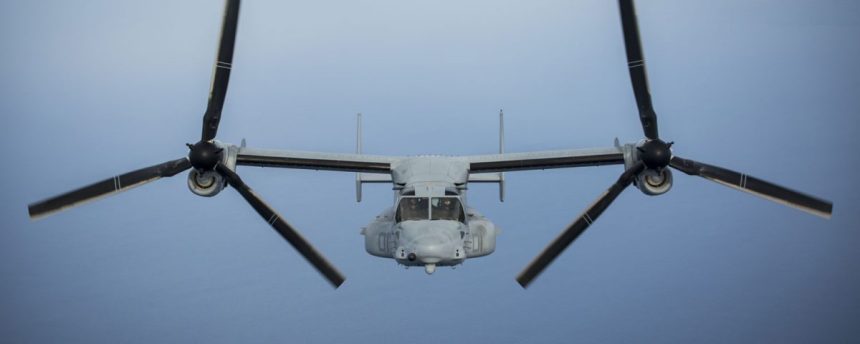Four U.S. Marine Corps MV-22 Ospreys Have Crossed the Pacific for the First Time.
A flight of four U.S. Marine Corps MV-22 Osprey tilt rotor aircraft has completed a historic first ever long-range flight across the Pacific Ocean between Hawaii and Royal Australian Air Force Base Darwin. The aircraft stopped on Guam and Wake Island during the multi-day long-range training deployment and were supported by Marine Corps KC-130 tanker aircraft. Total distance for the multi-flight deployment was approximately 6,000 miles.
The four aircraft were part of Marine Medium Tiltrotor Squadron 268, or VMM-268 the “Red Dragons” based at Marine Corps Base Hawaii, Kaneohe Bay, Hawaii and operate under the command of Marine Aircraft Group 24 (MAG-24) and the 1st Marine Aircraft Wing (1st MAW). Their ability to deploy over extended ranges proves additional capability for the unit throughout the Pacific theater.
The Ospreys will be joined by five AH-1W Super Cobra gunships and four UH-1Y Venom tactical transport helicopters also from Hawaii’s Kaneohe Bay. The aircraft are participating in a 6-month long Marine Rotational Force-Darwin training operation to build commonality between U.S. Marine and Australian operations and familiarize Marine assets with the operational area.
The Red Dragons, Marine Medium Tiltrotor Squadron 268, reached full operational capability this past January and are scheduled to receive another twelve MV-22 Osprey tiltrotors in 2018.
The Marine Corps version of the Osprey, the MV-22, has an unrefueled range of 990 miles and cruises at 322 MPH. This fast, long-range reach, complemented by large capacity of 24 combat troops and a flight crew of 3, gives the Osprey capabilities unmatched by previous legacy vertical takeoff utility aircraft like the Marine CH-46 Sea Knight and CH-53E Super Stallion helicopters.
This is not the first long-range deployment of Marine MV-22s. In 2013 a pair of MV-22 Ospreys completed a complex multi-stage deployment over the Pacific with stops at Clark AFB in the Philippines originating from Okinawa, Japan. The flight transited Darwin and continued to Townsville, Australia, for a total distance of more than 4,000 miles.
An even longer MV-22 deployment took place in 2015 when three MV-22’s flew over 6,000 miles from California to Brazil with crew breaks at various locations en route.
MV-22 pilot, Capt. Manuel Torres, USMC, told media, “It’s definitely exciting to be part of the history of this deployment.”
“Long hauls are definitely what the aircraft was designed for. This is going to prove the range and distance and speed of the Osprey and really shape the global reach we’re looking for in the Pacific region,” said Marine Corps MV-22 pilot, Capt. Aaron Brugman.

The primarily carbon-fiber composite MV-22 does have a very advanced fly-by-wire flight control system that incorporates an advanced autopilot to reduce crew workload during long flights. The autopilot is actually capable of transitioning the aircraft from level forward flight into a hover when programmed to do so. No doubt the advanced control features and avionics, along with the high-speed and long-range, contributed to the success of these long-range deployments.








